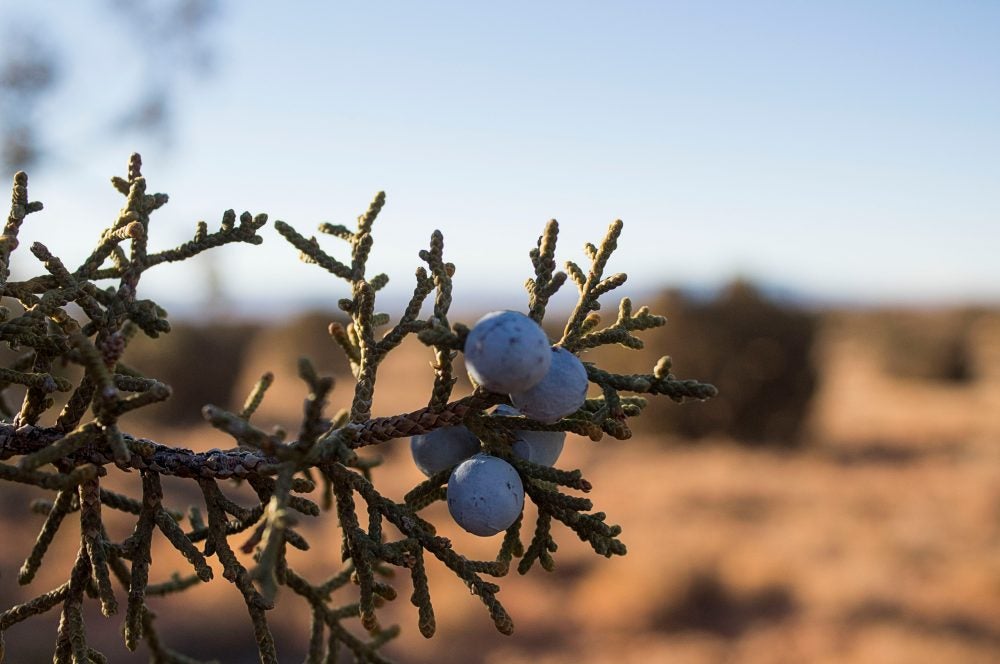
Juniper berries have always fascinated graduate student Charlie Scott.
As a child, Scott mistook them for food. “I learned the hard way that they weren’t,” Scott said.
The berries are prized, though, by the Diné (Navajo) people for their spiritual significance and meaning. The berries are only gathered once they’ve fallen from the tree. They’re rubbed against rocks to remove the skin and fruit; the seeds are soaked, and holes are bored through them. Once they’re dry, they’re threaded to create necklaces and bracelets, Scott said. The finished seeds are called ghost beads, and they are believed to ward off evil spirits.
“You’ll often see juniper jewelry on babies,” Scott said. “Babies are sensitive spiritually and, so, susceptible to evil spirits.”
According to Diné cosmology, when burned, the juniper tree’s smoke is also said to drive evil spirits away—and its sap strengthens teeth, Scott said.
A master’s degree candidate, Scott, who lives on the Navajo Nation Reservation in Arizona, is studying College Student Personnel in the Human Development and Family Studies Department with the goal of becoming the president of a tribal college someday.
Scott, who has never formally studied photography, sees the potential of photographs as a way to educate people by challenging caricatures and stereotypes of Indigenous Peoples.

